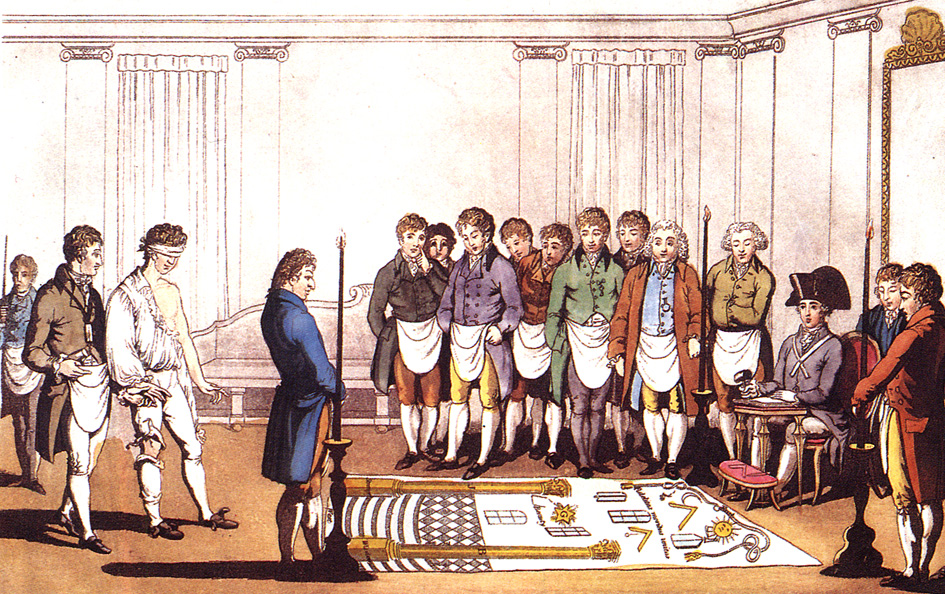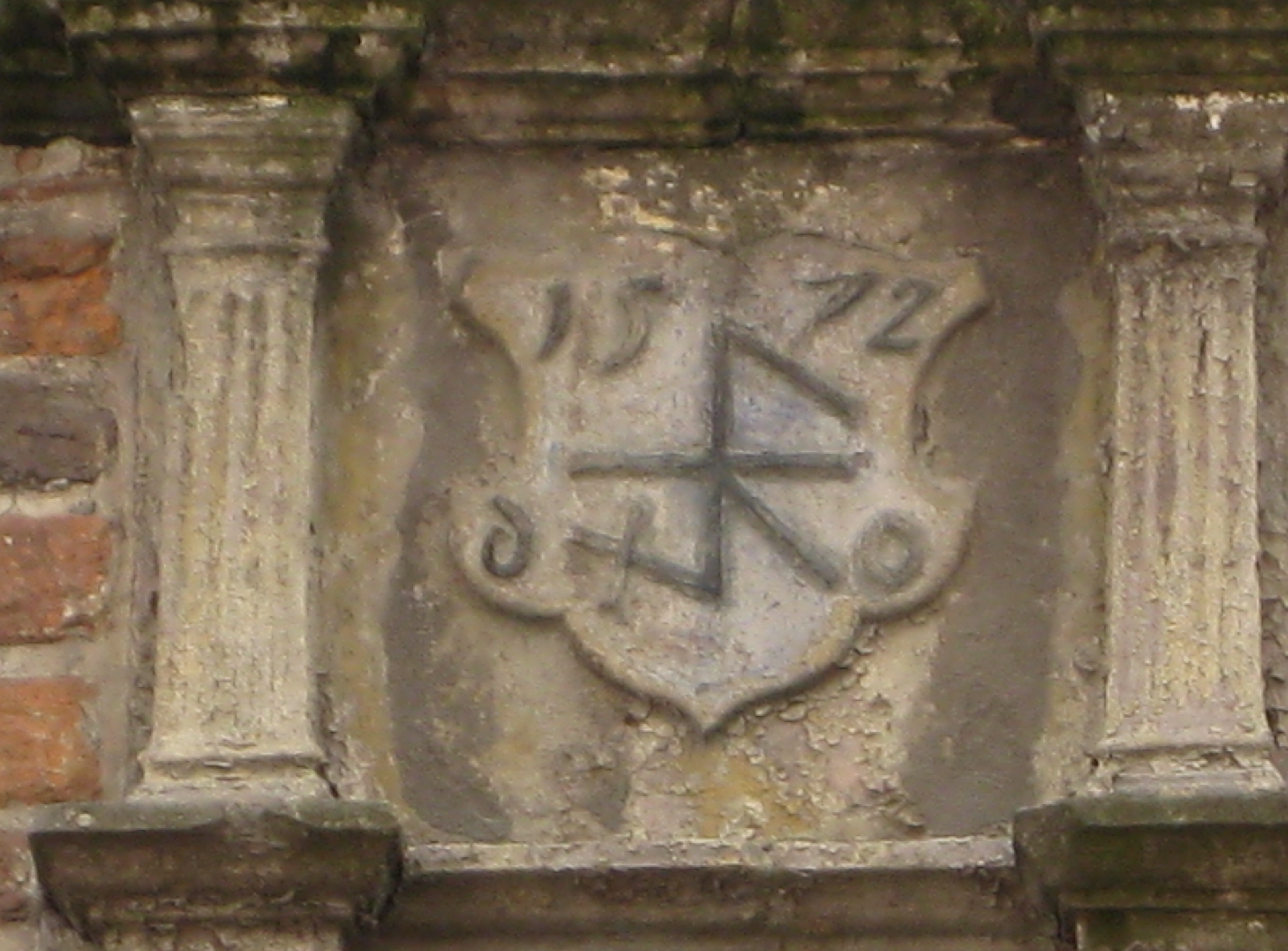|
Mason's Mark
A mason's mark is an engraved symbol often found on dressed stone in buildings and other public structures. In stonemasonry Regulations issued in Scotland in 1598 by James VI's Master of Works, William Schaw, stated that on admission to the guild, every mason had to enter his name and his mark in a register. There are three types of marks used by stonemasons. *Banker marks were made on stones before they were sent to be used by the walling masons. These marks served to identify the banker mason who had prepared the stones to their paymaster. This system was employed only when the stone was paid for by measure, rather than by time worked. For example, the 1306 contract between Richard of Stow, mason, and the Dean and Chapter of Lincoln Cathedral, specified that the plain walling would be paid for by measure, and indeed banker marks are found on the blocks of walling in this cathedral. Conversely, the masons responsible for walling the eastern parts of Exeter Cathedral were paid b ... [...More Info...] [...Related Items...] OR: [Wikipedia] [Google] [Baidu] |
Jagdschloss Grunewald
The Jagdschloss Grunewald, a hunting lodge, is the oldest preserved castle of Berlin, Germany. It is on the south waterfront of the Grunewaldsee and is part of the locality Dahlem (Berlin), Dahlem in the borough Steglitz-Zehlendorf. The Jagdschloss was built in 1542/1543. Its owner was Joachim II Hector, Elector of Brandenburg, Joachim II Hector the prince-elector of the Margraviate of Brandenburg. The building was created in the Renaissance style and got the name ''Zum grünen Wald'', "to the green forest", and gave the whole Grunewald (forest), Grunewald its name. Around 1800 the château got the name Grunewald too. During reconstructions between 1705 and 1708 by Frederick I of Prussia, Frederick I, the first king of Kingdom of Prussia, Prussia, it got its Baroque design by master builder Martin Grünberg. The Jagdschloss has been administered by the Prussian Palaces and Gardens Foundation Berlin-Brandenburg since 1932 and is used as a museum. It contains paintings by Lucas C ... [...More Info...] [...Related Items...] OR: [Wikipedia] [Google] [Baidu] |
Masonic Symbolism
Masonic ritual is the scripted words and actions that are spoken or performed during the degree work in a Masonic lodge. Masonic symbolism is that which is used to illustrate the principles which Freemasonry espouses. Masonic ritual has appeared in a number of contexts within literature including in "The Man Who Would Be King", by Rudyard Kipling, and ''War and Peace'', by Leo Tolstoy. Purpose Freemasonry is described in its own ritual as a "Beautiful and profound system of morality, veiled in allegories and illustrated by symbols". The symbolism of Freemasonry is found throughout the Masonic lodge, and contains many of the working tools of a medieval or renaissance stonemason. The whole system is transmitted to initiates through the medium of Masonic ritual, which consists of lectures and allegorical plays. Common to all of Freemasonry is the three grade system of ''Freemasonry#Other degrees, orders, and bodies, Craft'' or ''Masonic lodge#Types, Blue Lodge'' freemasonry, whose a ... [...More Info...] [...Related Items...] OR: [Wikipedia] [Google] [Baidu] |
Merchant's Mark
A merchant's mark is an emblem or device adopted by a merchant, and placed on goods or products sold by him in order to keep track of them, or as a sign of authentication. It may also be used as a mark of identity in other contexts. History Ancient use Merchants' marks are as old as the sealings of the third millennium BCE found in Sumer that originated in the Indus Valley. Impressions of cloth, strings and other packing material on the reverse of tags with seal impressions indicate that the Harappan seals were used to control economic administration and trade. Amphorae from the Roman Empire can sometimes be traced to their sources from the inscriptions on their handles. Commercial inscriptions in Latin, known as tituli picti, appear on Roman containers used for trade. Middle ages and early modern period Symbolic merchants' marks continued to be used by artisans and townspeople of the medieval and early modern eras to identify themselves and authenticate their goods. T ... [...More Info...] [...Related Items...] OR: [Wikipedia] [Google] [Baidu] |
House Mark
A house mark was originally a mark of property, later also used as a family or clan emblem, incised on the facade of a building, on animals, in signet and similar in the farmer and burgher culture of Germany and Scandinavia. These marks have the appearance of glyphs or runes consisting of a pattern of simple lines, without the application of colour. Description The form of house marks is based on function. They should be easy to cut, scratch or engrave with a knife or similar tool. At the same time, they should be distinctive and easy to remember. House marks differ from the more complicated patterns of a coat of arms or flags, which include surfaces and solid colors. House marks can be made from one or two lines and up to quite a complex pattern of line figures. Based on appearance, house marks resemble line figures in rock carvings and in early writing systems. It is unclear how extensively such ancient line figures were used as marks for people or property ownership. T ... [...More Info...] [...Related Items...] OR: [Wikipedia] [Google] [Baidu] |
Timber Framing
Timber framing (german: Holzfachwerk) and "post-and-beam" construction are traditional methods of building with heavy timbers, creating structures using squared-off and carefully fitted and joined timbers with joints secured by large wooden pegs. If the structural frame of load-bearing timber is left exposed on the exterior of the building it may be referred to as half-timbered, and in many cases the infill between timbers will be used for decorative effect. The country most known for this kind of architecture is Germany, where timber-framed houses are spread all over the country. The method comes from working directly from logs and trees rather than pre-cut dimensional lumber. Hewing this with broadaxes, adzes, and draw knives and using hand-powered braces and augers (brace and bit) and other woodworking tools, artisans or framers could gradually assemble a building. Since this building method has been used for thousands of years in many parts of the world, many styles ... [...More Info...] [...Related Items...] OR: [Wikipedia] [Google] [Baidu] |
Builder's Signature
A builder's signature, sometimes known as a craftsman's signature, tradesman's signature, or workman's signature, is a type of signature associated with several skilled trades in which a tradesperson inscribes their name on a structure during or after completion of a project. In some instances, the signature may be hidden from public view, such as a signature inscribed on wooden framing which is subsequently covered with drywall; in other instances the signature may be prominently displayed such as in concrete. Historic examples Several notable architects and carpenters throughout history are known to have employed builder's signatures on the structures they built. Frank Lloyd Wright was known to place a red square tile on buildings he designed; on six occasions, Wright signed his name inside these square tiles. Thomas de Monchaux has written that "in 1950, Wright commissioned ceramicist Jeanette Pauson Haber, to make some 25 red tiles inscribed with his initials, that were, in a ... [...More Info...] [...Related Items...] OR: [Wikipedia] [Google] [Baidu] |




